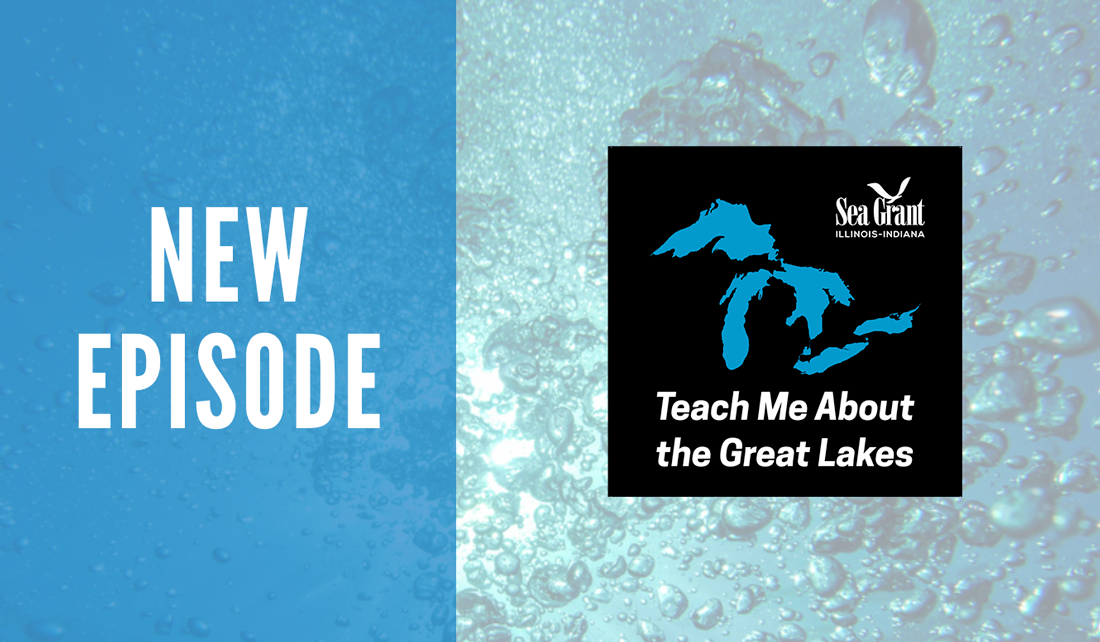
Illinois-Indiana Sea Grant’s Dr. Stuart Carlton has started a new monthly podcast called “Teach Me About the Great Lakes.” The purpose of the podcast is to help Carlton—a social scientist who grew up in the South near the Gulf of Mexico—learn about the biology, ecology and natural history of the Great Lakes.
“In my two years at Illinois-Indiana Sea Grant, I’ve learned a lot about what makes the Great Lakes special, but there’s so much to know,” said Carlton. “This podcast gives me a chance to harness the knowledge of IISG specialists and the many scientists and other fascinating people in the region to help me better understand this amazing resource.”
A new episode of Teach Me About the Great Lakes will be released on the first Monday of each month. The first episode, “They’re Also Called Nurdles,” is embedded below. Carlton and co-host Hope Charters talk with special guests Carolyn Foley and Sarah Zack about microplastics. What are they? How do they affect fish and people? What can we do to help prevent adding more microplastics to our waters? Find out what researchers know so far about this contaminant.
Love this episode and want to hear more in the future? Subscribe on Apple Podcasts or Spotify.
If you have questions you want answered about the Great Lakes, reach out to @TeachGreatLakes on Twitter or contact Stuart Carlton.
Illinois-Indiana Sea Grant is a part of University of Illinois Extension and Purdue Extension.

